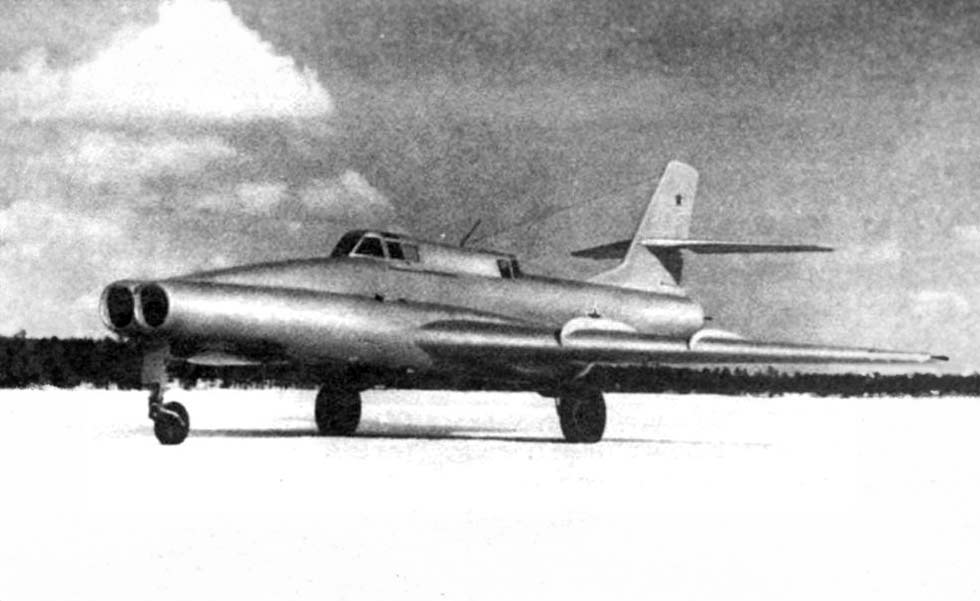The Ilyushin IL-40 “Brawny” was a Soviet jet-powered ground attack aircraft known for its armored design and heavy firepower.
In brief
The Ilyushin IL-40, codenamed “Brawny” by NATO, was a significant development in Soviet aviation during the Cold War era. Designed primarily for ground-attack missions, this jet-powered aircraft was characterized by its robust armored protection and formidable armament. First flown in 1953, the IL-40 was intended to provide close air support to Soviet ground forces, combining durability with powerful offensive capabilities. Its design featured innovations in pilot protection and weapons integration, showcasing advancements in Soviet military aviation technology. However, the rapid evolution of air warfare technology and the shift towards supersonic aircraft led to the IL-40’s limited service life.
The Ilyushin IL-40 “Brawny” stands as an important chapter in the history of military aviation, marking the Soviet Union’s post-World War II efforts in developing specialized ground attack aircraft.
History of the Development of the Ilyushin IL-40 (Brawny)
In the early years of the Cold War, the Soviet Union recognized the need for a dedicated ground attack aircraft that could withstand heavy fire while supporting ground troops. This need was driven by the evolving nature of armed conflict, where close air support became increasingly vital.
The IL-40 was developed by the Ilyushin design bureau, led by Sergei Ilyushin. The program was launched to create an aircraft that could deliver effective close air support while enduring significant damage, a concept stemming from the experiences of World War II.
The IL-40’s maiden flight occurred on March 7, 1953. Its development was marked by a focus on survivability and firepower, with the aim of providing the Soviet military with a superior ground-attack capability.
The IL-40 represented a shift in Soviet military strategy, emphasizing the role of air power in supporting ground operations. It also reflected the technological competition of the Cold War era, as the Soviet Union sought to match and surpass Western military capabilities.

Design of the Ilyushin IL-40 (Brawny)
The IL-40 was designed with a focus on pilot protection and offensive capability. It featured extensive armor plating, especially around the cockpit and vital engine areas. The aircraft measured 17.6 meters in length with a wingspan of 18.5 meters.
The heavy armor offered unmatched pilot protection but also resulted in increased weight, affecting the aircraft’s agility and speed. The IL-40’s design was a balance between durability and performance, a crucial factor in its ground-attack role.
The IL-40’s integration of heavy armor and weaponry was a notable advancement in jet-powered ground attack aircraft design. It set a precedent for future Soviet and Russian ground attack aircraft, emphasizing survivability in hostile environments.
Performance of the Ilyushin IL-40 (Brawny)
Equipped with two Mikulin AM-5 jet engines, the IL-40 had a top speed of 950 km/h (590 mph) and a service ceiling of 12,000 meters (39,370 feet). It boasted a range of 1,100 km (684 miles), making it capable of operating deep into enemy territory.
In comparison to contemporaneous Western aircraft like the A-10 Thunderbolt II, the IL-40 was less agile but offered superior armored protection. Its armament and range made it a formidable opponent in ground-attack missions.
Variants of the Ilyushin IL-40 (Brawny)
The IL-40 saw several variants, including the IL-40P, which featured improved avionics and armament. Each variant aimed to enhance the aircraft’s operational capabilities, adapting to evolving military requirements.
Military Use and Combat of the Ilyushin IL-40 (Brawny)
The IL-40’s primary role was to provide close air support for Soviet ground forces. It was armed with cannons, bombs, and rockets, making it versatile in various combat scenarios. While it did not see extensive combat, its presence influenced Soviet military doctrine and air support strategies.
The IL-40’s operational history was relatively brief due to rapid advancements in military aviation. It was not widely exported, as the Soviet Union soon shifted focus to developing supersonic aircraft. The IL-40 was eventually replaced by more advanced models, reflecting the dynamic nature of Cold War military technology.
The Ilyushin IL-40 “Brawny” was a testament to the Soviet Union’s innovation in military aviation during the Cold War. Its design and capabilities embodied the era’s strategic priorities and technological aspirations. While its service life was limited, the IL-40’s contributions to ground-attack aircraft design and its role in Soviet military aviation history remain significant.
Back to the Fighter Jet section.